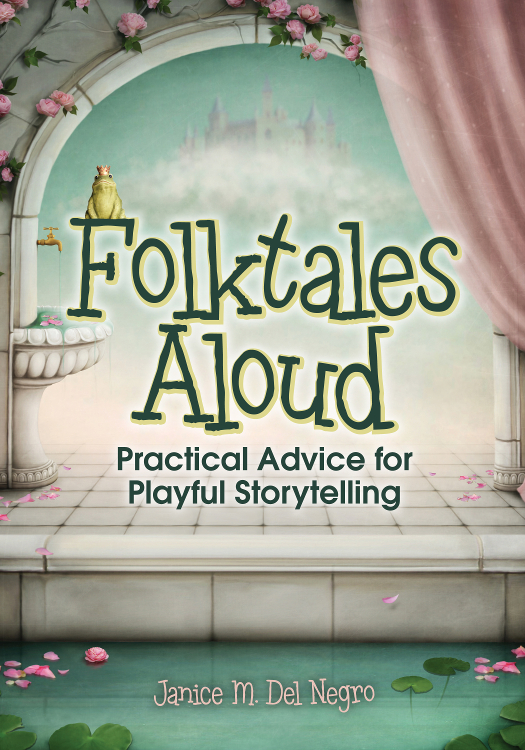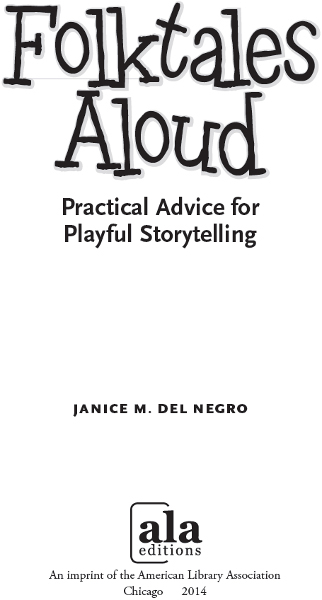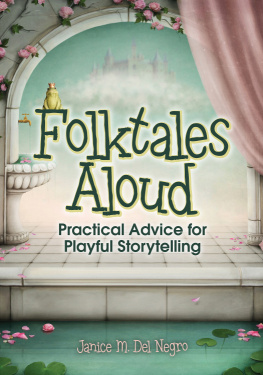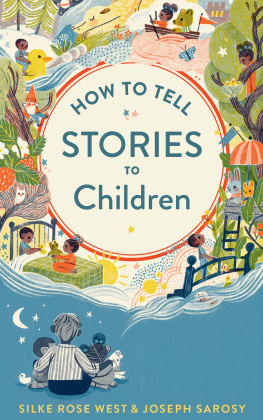
ALA Editions purchases fund advocacy, awareness, and accreditation programs for library professionals worldwide.

Janice M. Del Negro is an associate professor at the Graduate School of Library and Information Science at Dominican University in River Forest, Illinois, where she teaches storytelling, childrens and young adult literature, and foundations of library and information science. She is also on the advisory board for the Butler Center, Dominicans new center for childrens and young adult literature. Before coming to Dominican, she was the editor for The Bulletin of the Center for Childrens Books. Her list of presentations and publications is extensive and includes a textbook on storytelling coauthored with Ellin Greene; two childrens picture books, the ALA Notable Book Willa and the Wind and Lucy Dove, which won the Anne Izard Storytellers Choice Award; and a collection of supernatural tales for young adults, Passion and Poison. She has served on several ALA book selection committees and is an active storyteller, having appeared at the National Storytelling Festival and similar events around the country.
2014 by the American Library Association.
Extensive effort has gone into ensuring the reliability of the information in this book; however, the publisher makes no warranty, express or implied, with respect to the material contained herein.
ISBNs: 978-0-8389-1135-8 (paper); 978-0-8389-9631-7 (PDF); 978-0-8389-9632-4 (ePub); 978-0-8389-9633-1 (Kindle). For more information on digital formats, visit the ALA Store at alastore.ala.org and select eEditions.
Library of Congress Cataloging-in-Publication Data
Del Negro, Janice M.
Folktales aloud : practical advice for playful storytelling / Janice M. Del Negro.
pages cm
Includes bibliographical references and index.
ISBN 978-0-8389-1135-8 (alk. paper)
1. Storytelling. 2. Childrens librariesActivity programs. 3. Elementary school librariesActivity programs. 4. Tales. I. Title.
Z718.3.D45 2014
027.62'51dc23
2013028036
Cover design by Kirstin Krutsch. Images Shutterstock, Inc.
To my students
Contents
Folktales Aloud is an offering to those who love and promote storytelling in all its diversity, especially those who have promoted storytelling in school and public libraries for the last 120-odd years. They were and are librarians, storytellers, collectors, teachers, and scholars, and this book stands on the foundation they created. These individualsLeClaire Alger, Augusta Baker, Pura Belpr, Frances Eunice Bowman, Sara Cone Bryant, Mary Gould Davis, Virginia Haviland, Alice Kane, Elizabeth Nesbitt, Frances Jenkins Olcott, Margaret Poarch, Effie Louise Power, Charlemae Hill Rollins, Ruth Sawyer, Frances Clarke Sayers, Marie Shedlockheld the raw flame of story in their hands and passed it on to the librarian storytellers who came after themCarol Birch, Sue Black, Milbre Burch, Gail de Vos, Elizabeth Ellis, Irene Fahrenwald, Elizabeth Figa, Ellin Greene, Mary Hamilton, Janice Harrington, Betsy Hearne, Steve Herb, Beth Horner, Sujin Huggins, Jim Jeske, Ron Jones, Melanie Kimball, Maggie Kimmel, Michael Leonard, Margaret Read MacDonald, Kate McDowell, Lee McLain, Mary Ogilvie, Anne Pellowski, Marie Ringenberg, Anne Shimojima, John Stewig, Janet Thompson, and many, many others. There is no way to include the names of all those who deserve to be thanked; please know that my gratitude extends to all those librarian storytellers who told and continue to tell stories to those in their charge. Special thanks to my graduate assistant Emily Fardoux for her enthusiastic tenacity, and to my dean, Susan Roman, for her constant encouragement. This book would be a wisp in the dark without editor Stephanie Zvirin, who has the patience of a saint.
Chapter 1
A Librarians Tale
I took a storytelling class in graduate library school. Not because I wanted to, but because it was expected that anyone planning on going into youth services in the school or public library would do so. I was terrified. I hated public speaking of any kind and spent most of the semester in a state of stomach-roiling panic.
When I got my first job as a childrens librarian at the Chicago Public Library, I was lucky enough to be taken under the wings of two experienced youth services librarians, Dorothy Evans and Grace OConnor. These wise women helped me navigate the sea of programming that was expected of the successful childrens librarian and kept me from drowning in preschool storytimes and other events. My most important lessons, however, came from the children to whom I told stories.
My fear of public speaking did not disappear when I became a professional childrens librarian, but I found if I could keep other grown-ups out of preschool storytime, my fears were greatly assuaged. After all, the children (ages 3 to 5 years old) didnt care; they were happy to participate in whatever program I managed to put together. Despite having taken a storytelling class, and despite having the advice of other librarians, my early programs with preschoolers tended more toward maintaining control and less toward communicating the joy of story. I believed (because thats what I was told in library school) that preschoolers needed the visual stimulus of the picture book in order to connect to story, and so my programs were locked into a certain standard, albeit successful, way of doing things: an opening song, a picture book, an action rhyme or fingerplay, another picture book, another action rhyme or fingerplay, a final picture book, a closing chant or song. The programs were solid, and they did what they were supposed to do: children loved the books, loved chanting and singing, loved the routine, and as a result checked out lots of books, which made everyone very happy. The circulation numbers were up, the program attendance statistics were high, and parents with children in preschool storytime were reading aloud at home sometimes far in excess of the recommended twenty minutes a day.
I was, however, unsatisfied. The manner of presentation quickly became rote, the presentation of programs a chore instead of a joy. I had attended a number of storytelling festivals, and I knew that a different sort of storytelling was possible, at least with older listeners. Still, there was that edict from library school: preschoolers need the visual stimulus of the picture book.
One day I sat in preschool storytime, twenty-five preschoolers gathered around my feet, as I read, once again, Paul Galdones The Three Billy Goats Gruff. By now I had read this story so many times (the children loved it, and who was I to deprive them?) that I knew where the page turns were without even looking. As I told the story, daylight slowly dawned: the children, twenty-five nearly always squiggly preschoolers sitting attentively on the floor, were not looking at the book at all; they were looking at my face as I told the tale. At that moment I did a very dangerous thing; I closed the book, and, as a popular penguin cartoon character once did, I departed from the text. I told the story without the book. Putting the book down meant I could use my hands to more effectively communicate; I could look at each and every child as I told. The complex and sometimes exasperating logistics of holding the book so everyone could see were eliminated; everyone could see without difficulty because now the pictures were in their imaginations. As the story went on the children scooted up toward my chair, until they were clustered closely around my feet, some even holding on to the hem of my pants. When we got to the end of the story, the cries of Again! Do it again! motivated me to do something additionally radical. I decided we would act it out.
Next page









